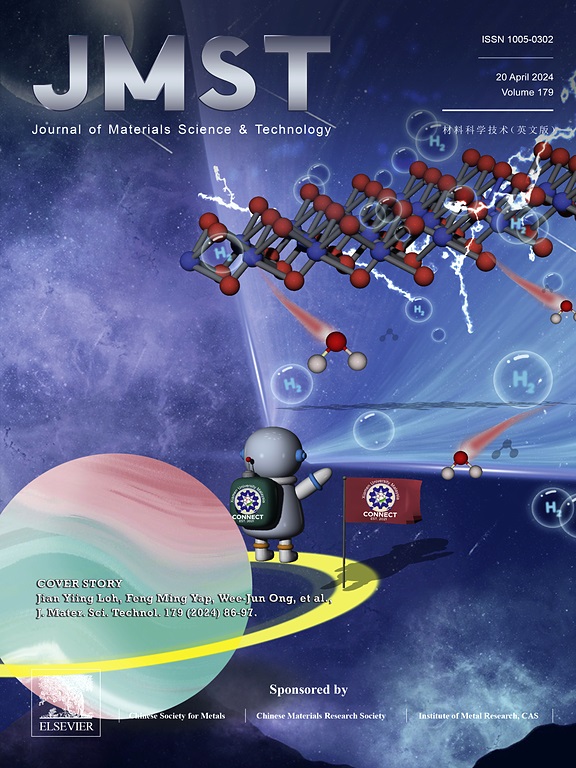通过低温热循环加速晶界松弛
IF 14.3
1区 材料科学
Q1 MATERIALS SCIENCE, MULTIDISCIPLINARY
引用次数: 0
摘要
晶界(GB)可以呈现出具有不同原子结构的多相,对材料的物理力学性能有显著影响。在外界刺激下,不同GB相之间的转变经常发生,但潜在的原子机制仍未得到充分的了解。本文通过分子动力学模拟,揭示了热循环诱导的GB亚平衡相变加速GB弛豫机制。在[100]对称倾斜GB中,200 ~ 400k之间的热循环加速了分裂风筝向正常风筝的相变。这种相变是由流体静压应力引起的局域空位的形成和附近原子的立即插入驱动的,这与传统的等温退火过程中涉及远距离原子扩散的相变机制不同。系统地研究了GB相变动力学,阐明了它们对关键热循环参数的依赖,包括最高温度Tmax、热振幅ΔT和循环数N.通过热循环还观察到约30%的饱和转变比,超过等温退火后的饱和转变比,从而增强了GB迁移率。本文章由计算机程序翻译,如有差异,请以英文原文为准。

Accelerated grain boundary relaxation via low temperature thermal cycling
Grain boundaries (GB) can exhibit multiple phases with distinct atomic structures, significantly impacting the physical and mechanical properties of materials. Under external stimuli, transitions between different GB phases frequently occur, yet the underlying atomistic mechanism remains insufficiently understood. Here, using molecular dynamics simulation, we uncover an accelerated GB relaxation mechanism through metastable-to-equilibrium GB phase transition induced by thermal cycling in aluminum. In the [100] symmetrical tilt GB, thermal cycling between 200 and 400 K accelerates the split-kite to normal-kite phase transition. This phase transition is driven by the hydrostatic stress-induced formation of localized vacancies and the immediate insertion of nearby atoms at the GB, distinguishing it from the conventional transition mechanism involving long-range atomic diffusion in isothermal annealing process. The kinetics of GB phase transitions is systematically investigated, clarifying their dependence on critical thermal cycling parameters, including maximum temperature Tmax, thermal amplitude ΔT, and cyclic number N. A saturated transition ratio of approximately 30% is also observed through thermal cycling, which exceeds that after isothermal annealing, leading to enhanced GB mobility.
求助全文
通过发布文献求助,成功后即可免费获取论文全文。
去求助
来源期刊

Journal of Materials Science & Technology
工程技术-材料科学:综合
CiteScore
20.00
自引率
11.00%
发文量
995
审稿时长
13 days
期刊介绍:
Journal of Materials Science & Technology strives to promote global collaboration in the field of materials science and technology. It primarily publishes original research papers, invited review articles, letters, research notes, and summaries of scientific achievements. The journal covers a wide range of materials science and technology topics, including metallic materials, inorganic nonmetallic materials, and composite materials.
 求助内容:
求助内容: 应助结果提醒方式:
应助结果提醒方式:


